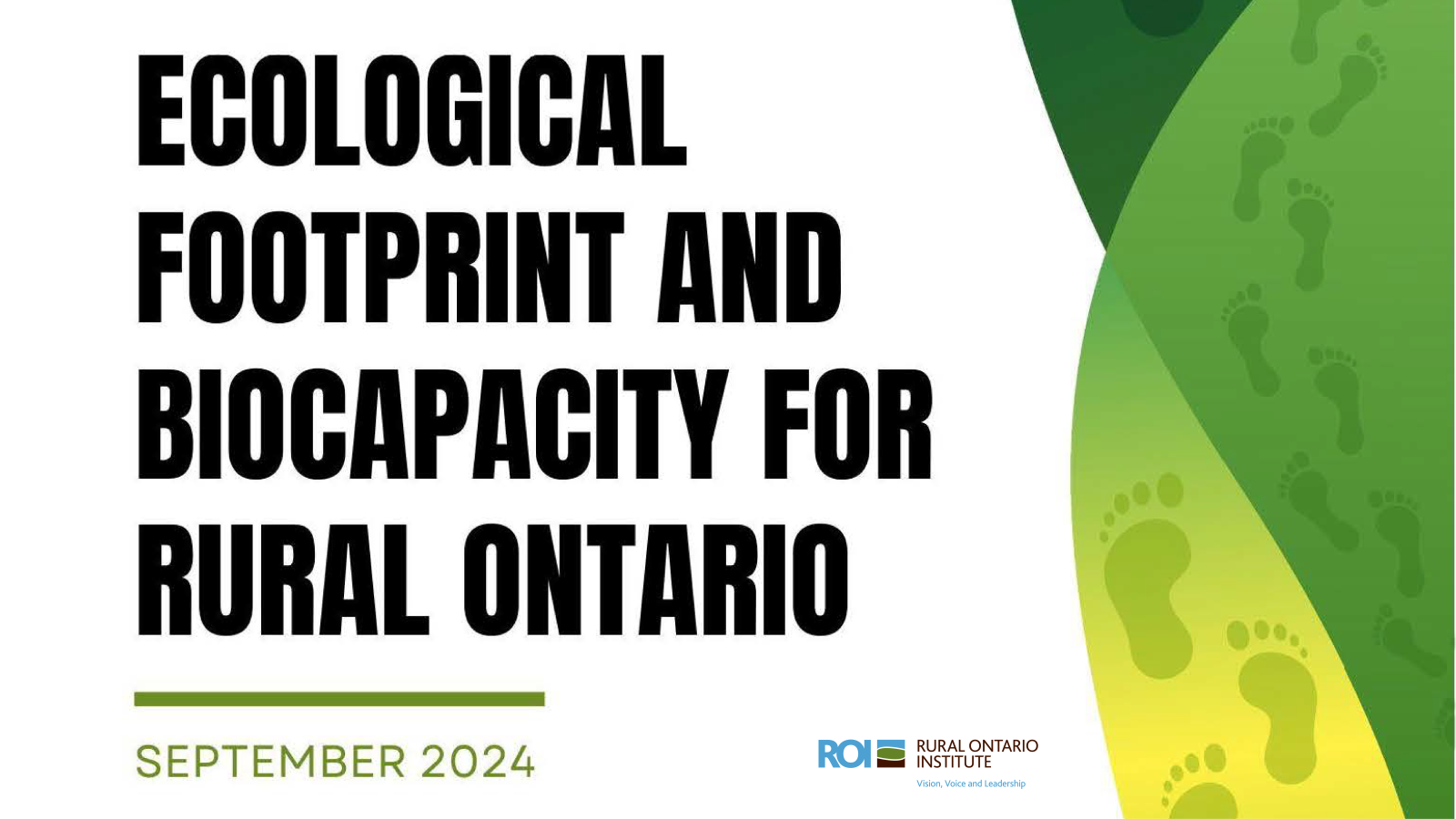 ROI partnered with York University’s Ecological Footprint Initiative to downscale Ontario’s accounts to the community level. This partnership is part of the International Ecological Footprint Learning Lab, a multi-year global partnership funded by the Social Sciences and Humanities Research Council. This project is the first attempt at creating Ecological Footprint and Biocapacity accounts for all communities in Ontario.
ROI partnered with York University’s Ecological Footprint Initiative to downscale Ontario’s accounts to the community level. This partnership is part of the International Ecological Footprint Learning Lab, a multi-year global partnership funded by the Social Sciences and Humanities Research Council. This project is the first attempt at creating Ecological Footprint and Biocapacity accounts for all communities in Ontario.
The results of this project are presented as indicators on ROI’s Community Wellbeing Dashboard. Communities can use Ecological Footprint and Biocapacity indicators to help them understand their ecological impact and facilitate plans for sustainable development and climate action.
For a summary of results for rural and urban communities in Ontario, see the Ecological Footprint and Biocapacity for Rural Ontario report. For details about our methods, see the Methodological Handbook.
Future work
We plan to update the community accounts regularly, when Ontario’s accounts are updated and/or new Census data is released by Statistics Canada.
Questions?
If you are interested in using Ecological Footprint and Biocapacity data to support decision making for your community, but are finding it difficult to apply or understand – we can help!
Please contact us for assistance or more information.
- About Ecological Footprint and Biocapacity
-
Ecological footprint and biocapacity is a sustainability metric that demonstrates the environmental impact from economic activities in a certain area. This metric can be scaled at different levels including individual, community, national, and global levels. Ecological Footprint measures the amount of ecological assets that are required to meet a population’s rate of consumption. Biocapacity measures the productivity of the ecological assets of the given area. In other words, Ecological Footprint measures the demand on natural resources while Biocapacity measures the supply of ecosystem services. If the Ecological Footprint of an area exceeds Biocapacity, then that area runs a Biocapacity deficit; and if Biocapacity exceeds Ecological Footprint, then that area runs a Biocapacity reserve. Together, Ecological Footprint and Biocapacity present a holistic snapshot of the impact of human activity on the environment.
Discover the New Rural Community Wellbeing Tool
Explore measures of ecological footprint and biocapacity for rural Ontario communities through ROI's new Rural Community Wellbeing Tool.
LEARN MORE